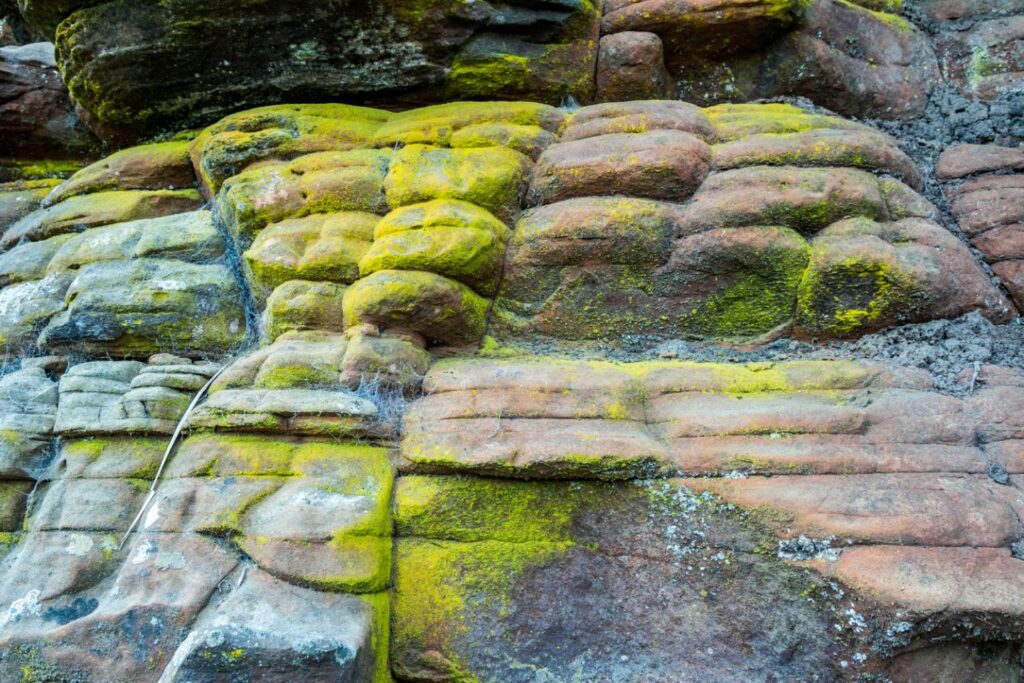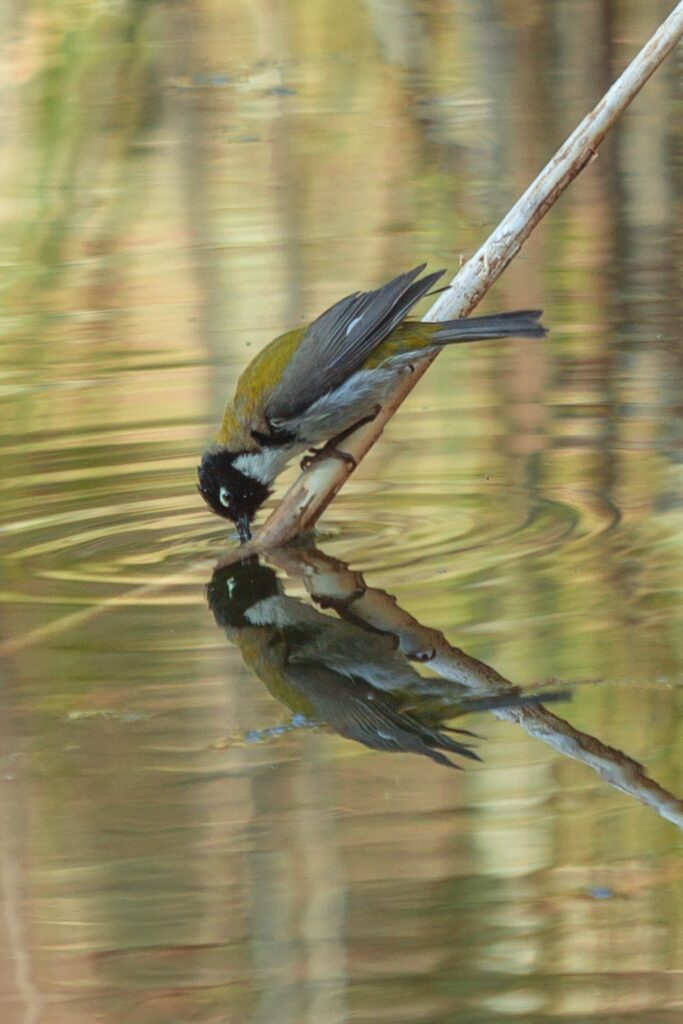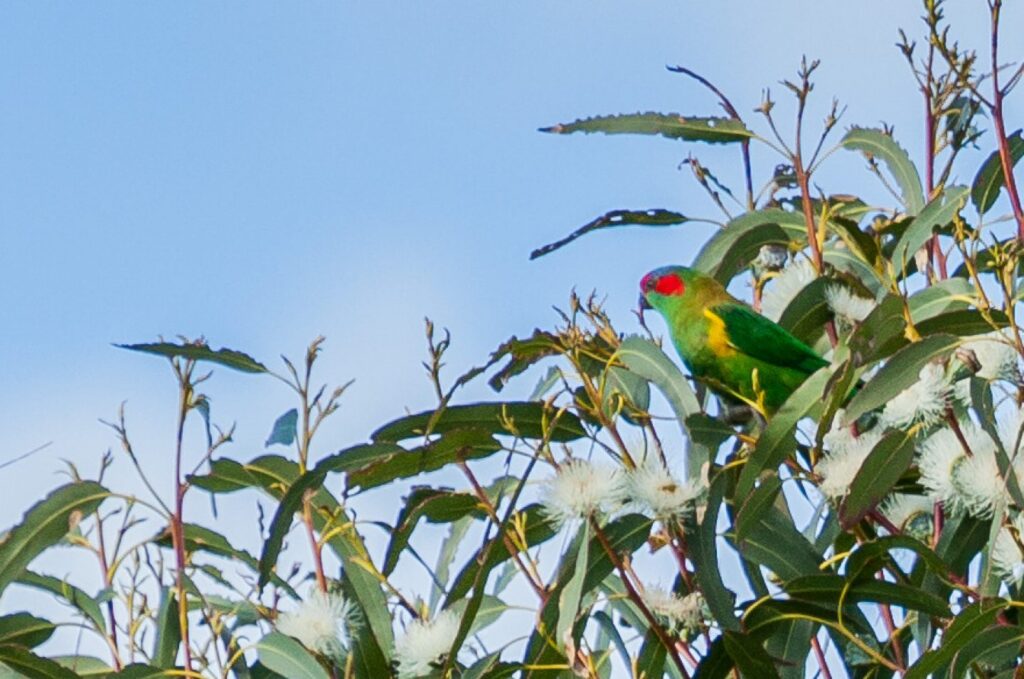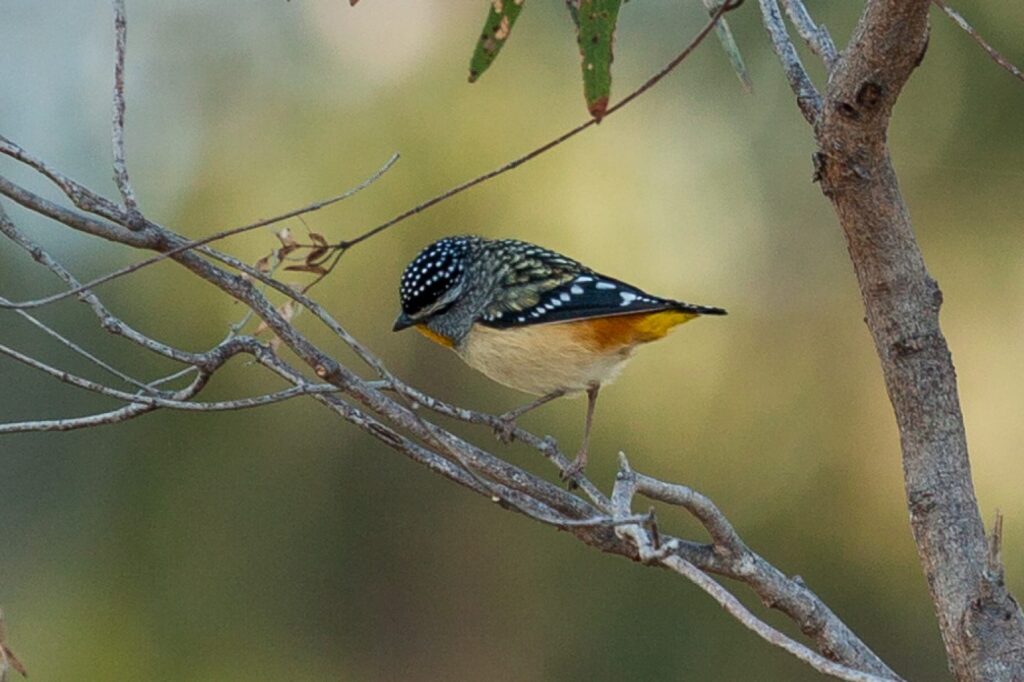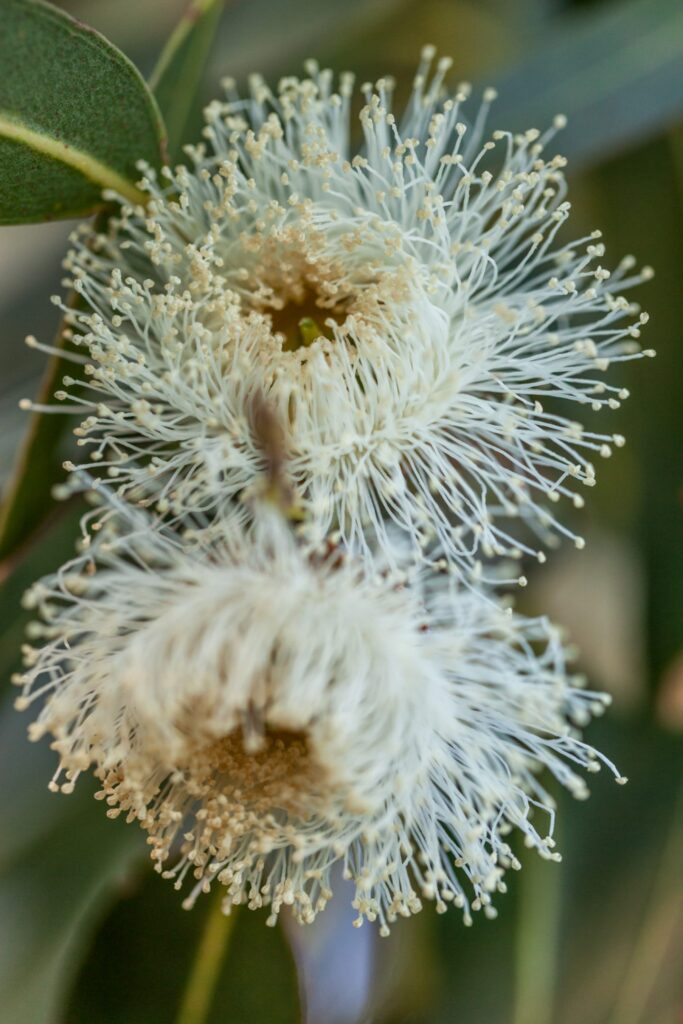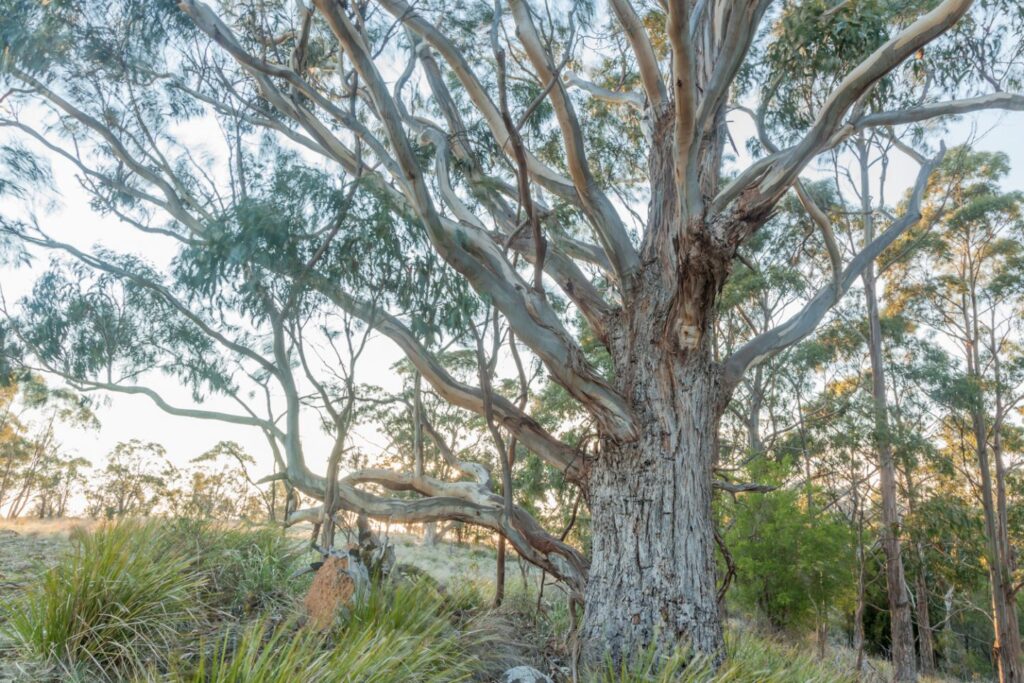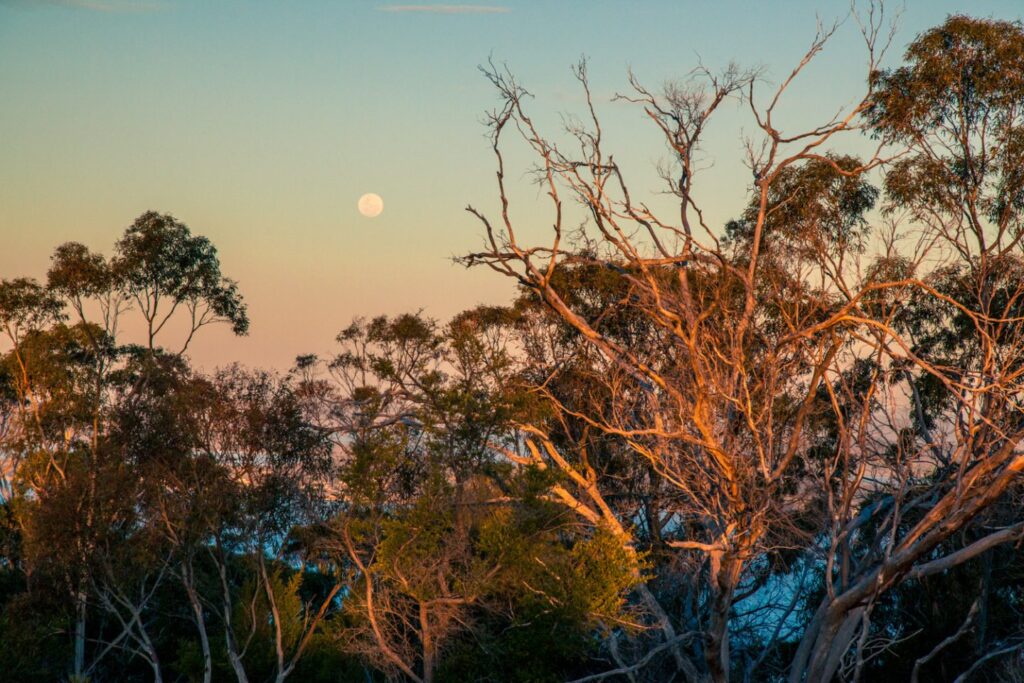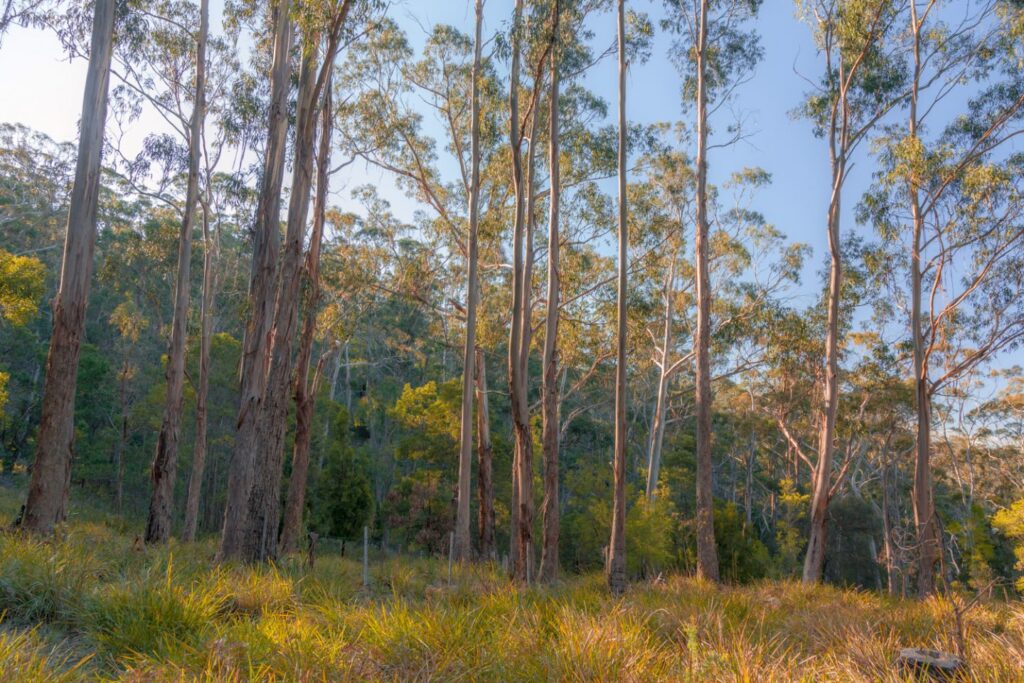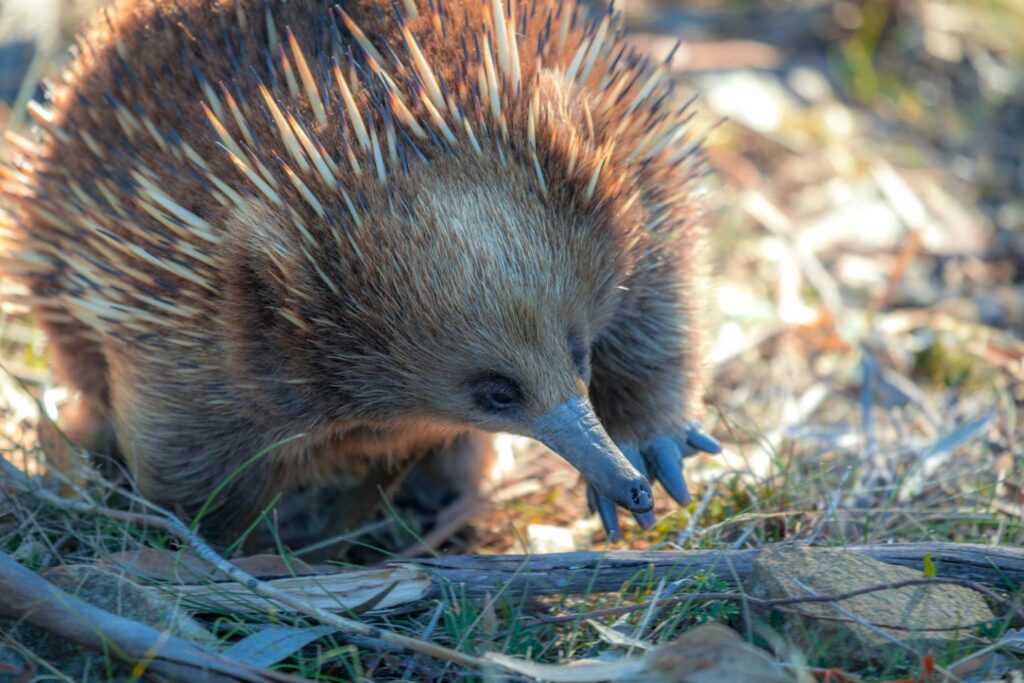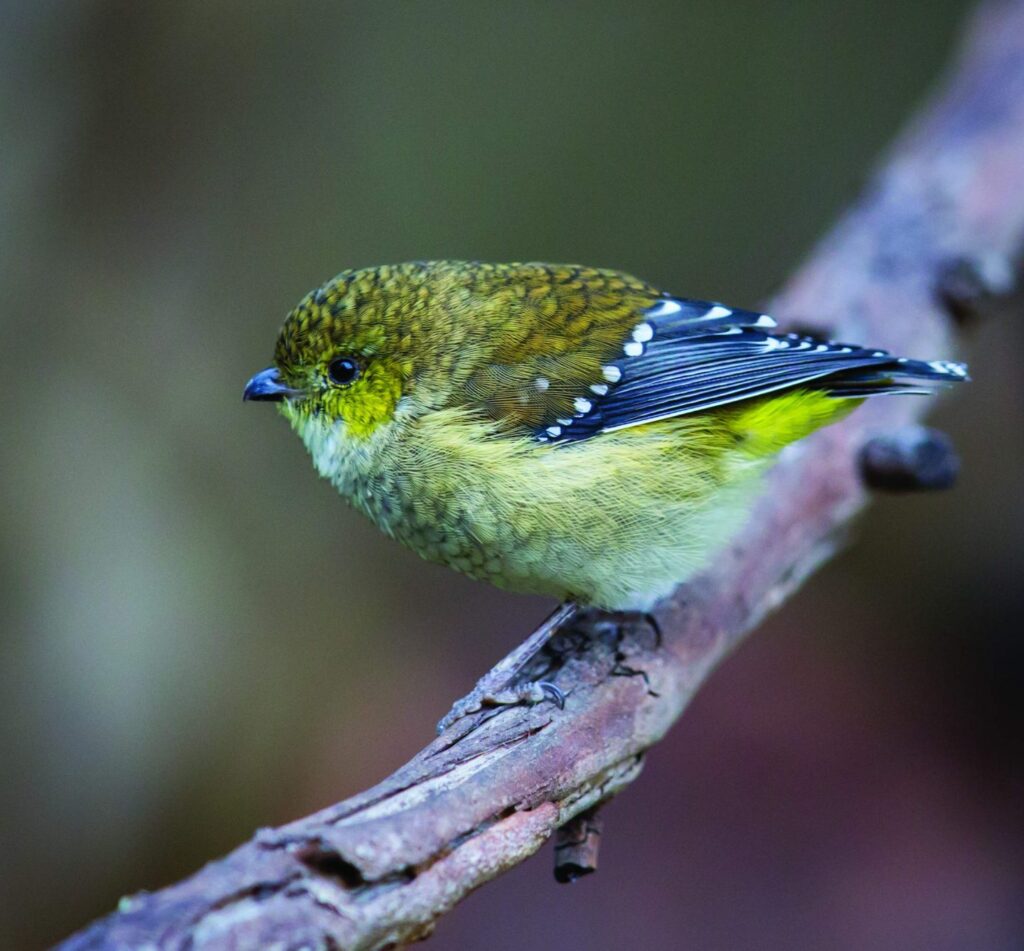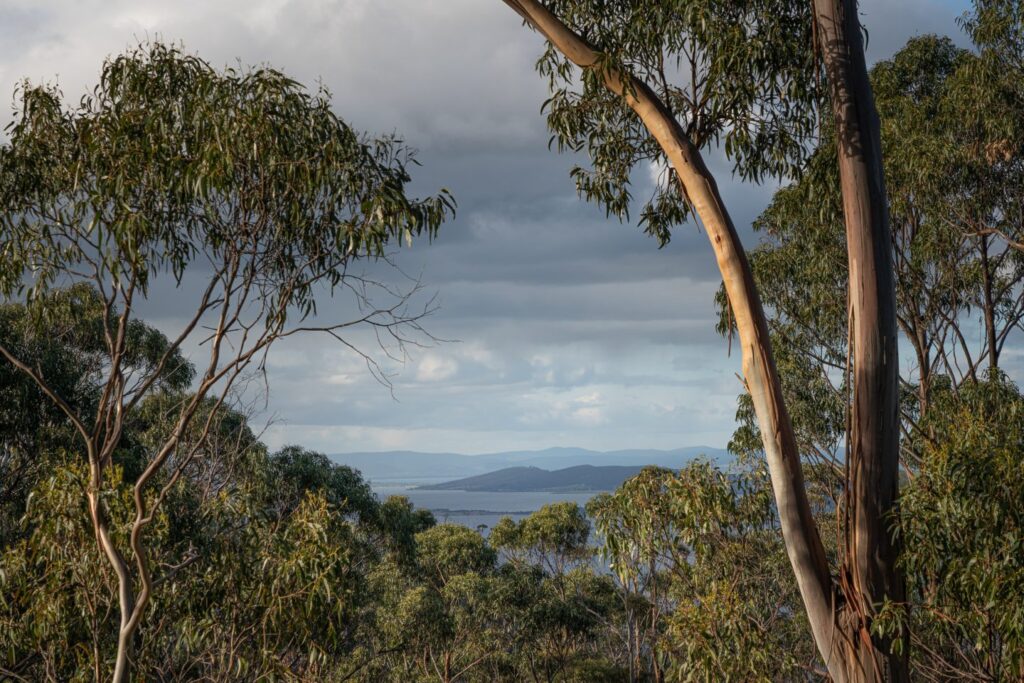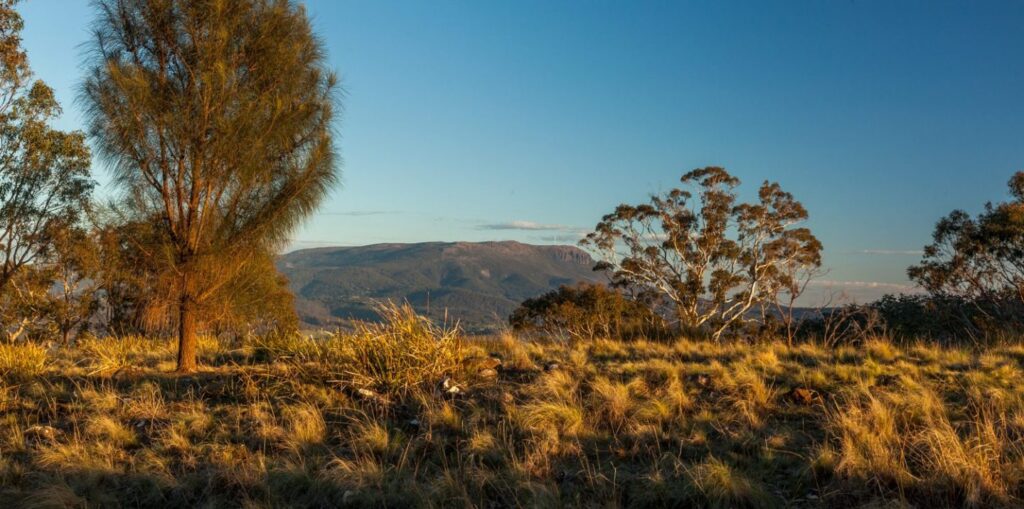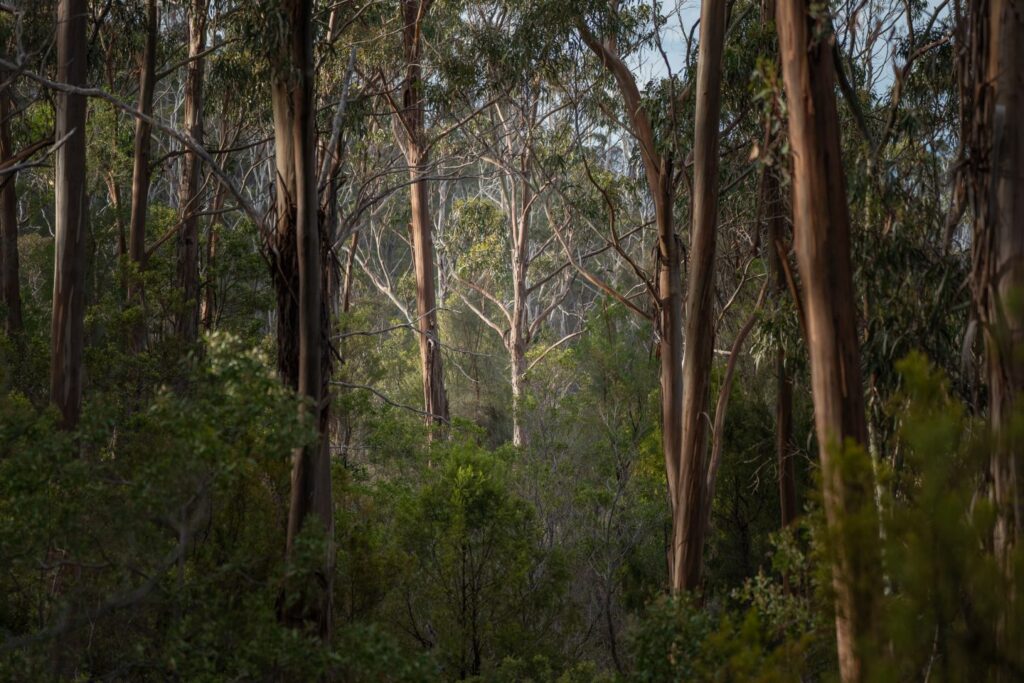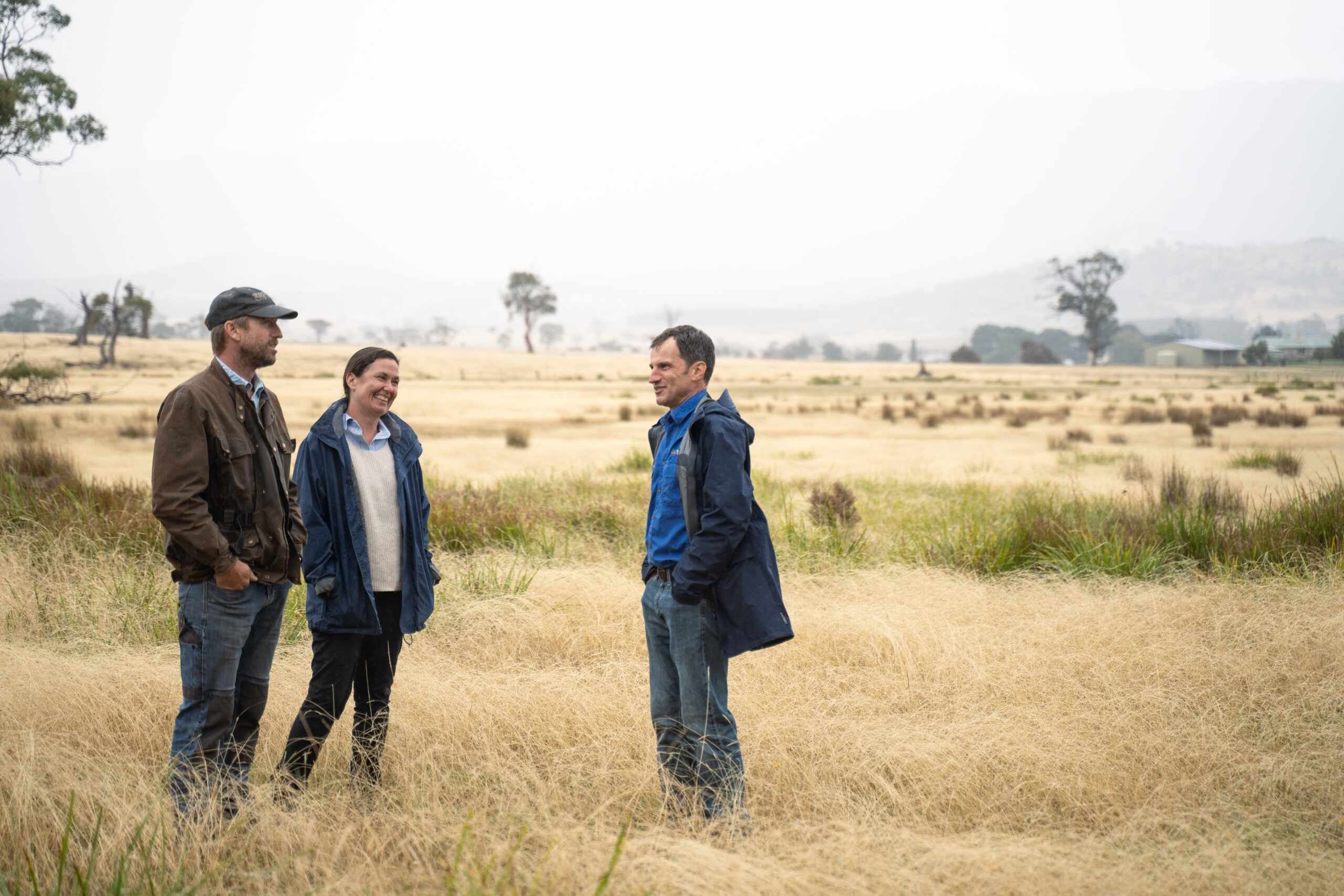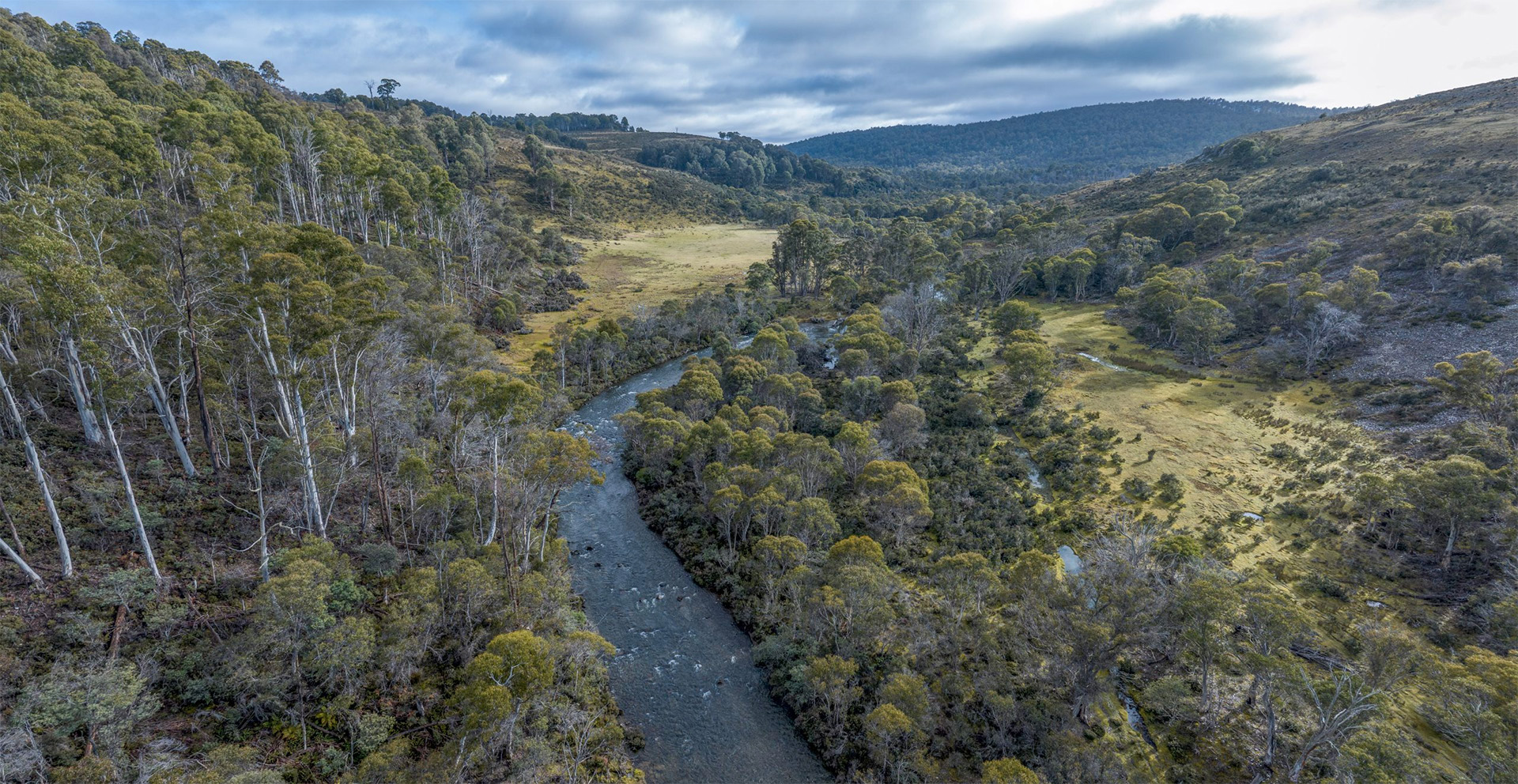Tinderbox Hills is a vibrant landscape of dense forest and diverse woodland, alive with the song of birds. Only half an hour’s drive from the centre of Hobart, the 67 hectares of Tinderbox Hills is one of the last areas of undisturbed nature so close to Tasmania’s capital.
A REFUGE FOR ENDANGERED BIRDS
Tinderbox Hills, right on Hobart’s doorstep, is truly special. It has an incredibly rich mix of habitats brimming with wildlife, from the canopy tops to the deep gullies. The towering blue gums (Eucalyptus globulus) support a visiting population of endangered swift parrots (Lathamus discolor).
Listen to swift parrots on the Tinderbox Hills property
This diverse, mature woodland contains extensive old-growth trees pocked with hollows, a retreat for those same swift parrots. White gum (Eucalyptus viminalis) is a valuable food source for the endangered forty-spotted pardalote (Pardalotus quadragintus), and Tinderbox’s white gums feed several breeding pairs. In fact, Tinderbox Hills is one of the last spots on the Tasmanian mainland where these tiny, rare birds still nest. There are also three wedge-tailed eagle (Aquila audax fleayi) nests on the property.
Listen to the breeding call of the forty-spotted pardalote
A DIVERSE, DELIGHTFUL WOODLAND
More than 80% of the Tinderbox Hills property is classed as vulnerable blue gum dry forest and woodland community, recognised at state and national levels as a high priority for protection.
Among the gums there is a rich population of acacia and dogwood (Pomaderris) groves, sprinkled with native cherry (Exocarpos cupressiformis), prickly box (Bursaria spinosa), dollybush (Cassinia aculeata), blackwood (Acacia melanoxylon) and black sheoak (Allocasuarina littoralis). The understorey is dominated by Poa tussocks, sagg (Lomandra longifolia), heaths and herbs. Tinderbox Hills may be small, but it is incredibly diverse.
Among the vegetation, as well as the many bird species, visitors might see the nationally threatened eastern quoll (Dasyurus viverrinus), eastern barred bandicoot (Perameles gunnii), Tasmanian bettong (Bettongia gaimardie) and long-nosed potoroo (Potorous tridactylus).
THE PERFECT LOCATION
This close to Hobart, there are very few patches of nature left intact as the suburbs advance. Being able to establish a conservation reserve in this area is a rare opportunity.
Tinderbox Hills Reserve links existing reserves in the area, building a significant conservation area of over 200 hectares in an area rapidly becoming suburban. A short flight to habitat on North Bruny Island, Tinderbox Hills also provides important connectivity for a host of woodland birds, including Tasmania’s special endemic species.
This is an area where nature is highly prized – Tinderbox Peninsula has one of the highest densities of Land for Wildlife properties in Tasmania.
View a map of the reserve (clicking the link will download a PDF to your computer).
ACCESSING TINDERBOX HILLS RESERVE
The TLC is working with Kingborough Council and other private landholders to develop an extended walking track that incorporates the Tinderbox Hills Reserve. Unfortunately, there is currently no legal way to get to our reserve by vehicle or on foot, due to right-of-way restrictions across other private blocks surrounding the property.
In the meantime, if you would like to walk the Tinderbox Hills Track in the nearby reserve you can find information here.
Banner image: Rob Blakers
